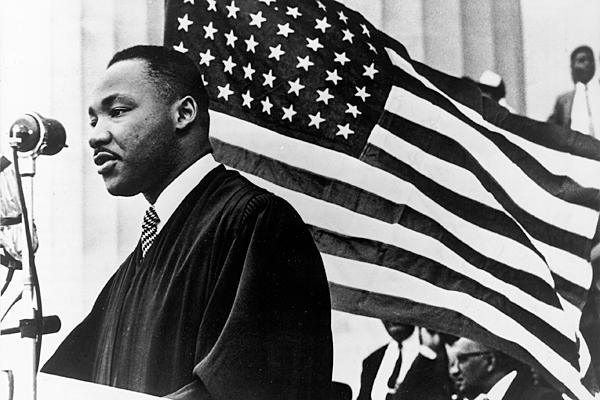
It’s not been just over fifty-three years ago that Rev. Dr. Martin Luther King, Jr. gave his most famous speech at the Lincoln Memorial that inspired generations upon generations of Americans to strive for a more equal for all races union. Some say changes have been made while other say that not much has moved our country forward. With President Barack Obama being the first black president of America, many point to that saying that proves things have advanced in the direction King would have wanted to see. Other feel that while he was elected, this also uncovered a lot of the underlying racism that persists in the United States today.
Every third Monday of January since Dr. King’s assassination in 1968, Americans have taken the day to reflect on his message of racial equality and the rippling effect it had on the civil rights movement. Our friends at Moose Roots used statistics from the U.S. Census and Bureau of Justice to visualize two areas where African Americans have made strides in inclusion, and two in which our country still has a ways to go.
Though the Fifteenth Amendment theoretically gave all citizens the right to vote in 1870, it wasn’t until The Voting Rights Act of 1965 was enacted that the law was enforced. The Act provided federal oversight of elections in more discriminatory jurisdictions, banned literacy tests and related devices for bigotry, and created legal support for people affected by voting bias. The following graph illustrates the percent difference between white and black voters in both presidential and congressional elections.
The election of former President Richard Nixon in 1968 was the first federal election in which black voters could exercise their right with less fear of discrimination. That year, 69.1 percent of whites and 57.6 percent of blacks voted. Since then, the number of black voters has steadily increased despite some obvious peaks and dips.
President Obama’s 2008 election was the first year the country saw a larger proportion of black votes (60.8 percent of blacks and 59.6 percent of whites voted), and this proportion grew even more during the next election year. Congressional elections still tend to see a disproportionately low black voter turnout. Though some states have recently tried to enforce strict voter identification laws, which some people argue that they discriminate against blacks and Hispanics, it seems as though year after year, more African Americans feel empowered to vote and have their voices heard.
While African Americans were far underrepresented 50 years ago, representation has grown from voting to holding some of the highest positions in government (including the presidency).
From 1959-1965, The number of black Americans in Congress remained stagnant at three representatives. However, from 1967 on, more were elected to the House. This was also the same year that Thurgood Marshall, the first African-American justice, was appointed.
The 112th Congress saw a record number of African-American representatives, 41 out of 435. Over the years, the Senate has only seen one black senator at a time, until 2013 when two were elected. Though it will be a while before Congress reflects the racial and ethnic makeup of the country, increasing black representation ensures that new policies are formed with a more diverse perspective.
Outside of the realm of politics, MooseRoots focused on economic metrics. Here, they looked at the median household income of Americans and broke it down by race.
Since the mid-’60s, each race has seen a slow but steady increase in median household income. Though this is consistent across the board, black Americans have always been stuck at the bottom, between about 25K and 40K a year. Even at their peak average income in 2000 ($40,783), they still made much less than white families ($62,672) and almost half as much as Asian American families ($76,649).
Breaking the cycle of poverty for many black Americans continues to be a long, uphill battle, but according to the Pew Research Center, there are fewer African Americans in the lower income bracket today than there were in 1971. Rakesh Kochhar of Pew told NBC that “compared to the overall population, African Americans make up only 43% of lower income households.”
Despite political advancements and socioeconomic gains, African Americans still encounter more microaggressions and bias in everyday life.
Blacks see a noticeably higher arrest rate than any other race — a fact that has come to the major public discussion in recent years. At its peak in 1989, blacks made up about 14,184 arrests per 100,000 people. In the most recent data collection in 2012, that number decreased to 7,920 per 100,000, but still is almost double the number of any other race. About 3,392 white people per 100K were arrested that same year.
The relationship between police and African Americans has been strained, to say the least, but increased awareness and discourse in mainstream media has allowed more people to focus on the problem (the #BlackLivesMatter movement has been at the forefront of discussion) and start working toward solutions.
America still has much more room for growth when it comes to integration and leveling the racial playing field, both within and outside of the law. Though much progress has been made, the U.S. is not yet a post-racial society and faces many tough hurdles ahead.
Despite these challenges, one would hope that if Dr. King were alive today, he would be happy to see his dreams becoming realities.

